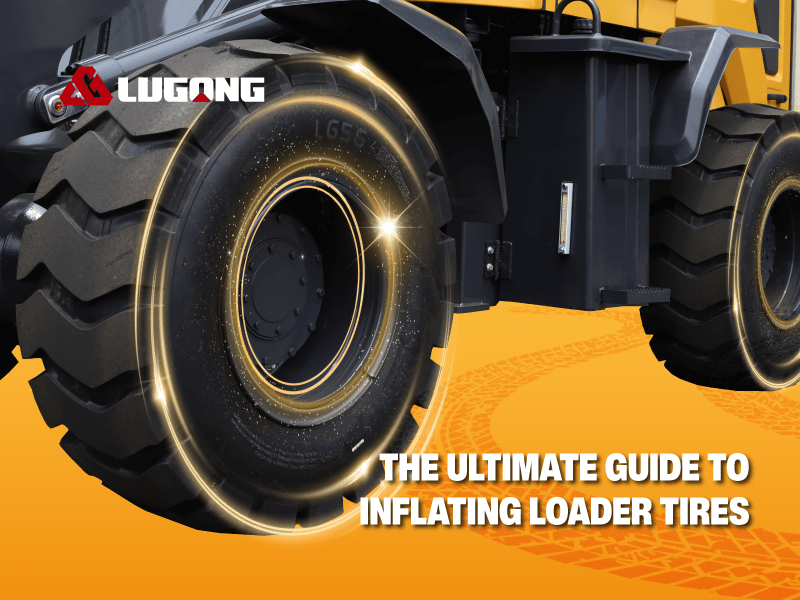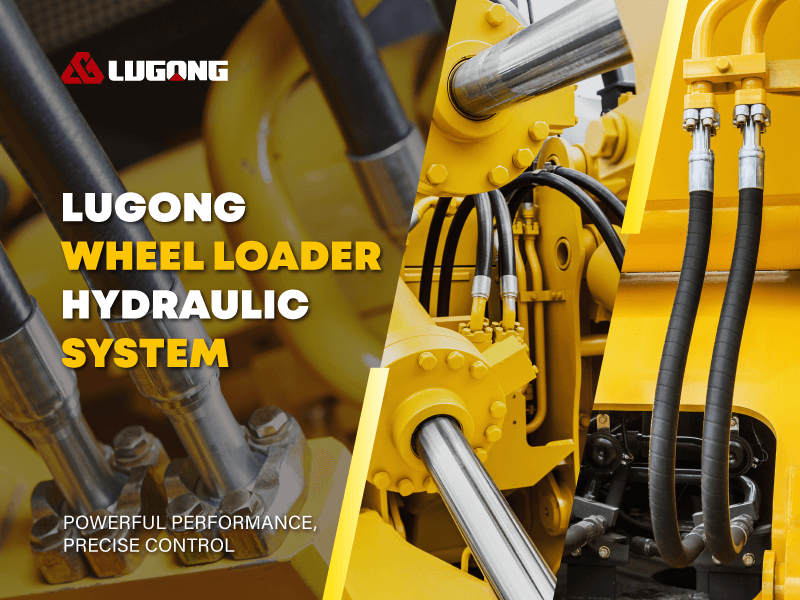Are You Inflating Your Wheel Loader Tires Correctly
Inflating tires may seem simple, but it is actually a key factor in ensuring safety and extending tire life. Incorrect tire pressure not only leads to premature tire failure, but is also a major safety hazard on construction sites. LuGong will give you a comprehensive understanding of the correct method for inflating wheel loader tires, safety precautions, and common misconceptions to help you avoid risks, reduce costs, and increase efficiency.

What are the risks of incorrect tire pressure
1. Overinflated tires: Reduced tire contact area with the ground, leading to decreased traction and braking performance. Increased wear on the tire crown center. Strong vibrations during driving, affecting operational comfort and the vehicle’s suspension system. Reduced impact resistance, making tires more prone to bursting when encountering obstacles.
2. Underinflated tires: Increased tire contact area with the ground, resulting in significantly higher fuel consumption. Excessive deformation of the tire body causes severe wear on both sides of the tire. Handling performance deteriorates, and vehicle stability is compromised.
Safety Standards for Tire Inflation on Loaders
1. It is recommended to use nitrogen gas for tire inflation and pressure adjustment. This applies to all machines equipped with rubber tires. Nitrogen is an inert gas that does not support combustion inside the tire.
2. Check and adjust the tire inflation pressure after the tires have cooled down completely, and notify all other personnel to leave the danger zone (around the wheel). The pressure of nitrogen-inflated tires is the same as that of air-inflated tires. It is recommended to select the tire inflation pressure according to the operating conditions of the wheel loader. The table below lists the inflation pressure at normal temperature under normal working conditions with a rated effective load.
| Tyre size | Hierarchy or intensity index | Front tire inflation pressurekPa | Rear tire pressurekPa |
| 8.25-16 | PR16 | 280~300 | 280~300 |
| 1200-16 | PR16 | 350~370 | 330~350 |
| 14/90-16 | PR16 | 475~495 | 455~475 |
| 20.5-16 | PR16 | 575~595 | 555~575 |
| 16/70-16 | PR16 | 475~495 | 455~475 |
| 17/60-16 | PR18 | 250~270 | 230~250 |
| 16/70-20 | PR16 | 350~370 | 330~350 |
| 16/70-24 | PR20 | 470~490 | 450~470 |
| 20/55-24 | PR18 | 525~545 | 505~525 |
| 17.5-25 | PR12 | 625~645 | 605~625 |
| 23.5-25 | PR20 | 300~320 | 280~300 |
Note: Operators of inflation equipment must receive necessary training. Improper tire inflation techniques can result in personal injury! Do not set the inflation equipment pressure higher than the recommended tire pressure by more than 140 kPa.
Conclusion
Inflating tires to the correct pressure at normal temperatures will result in underinflation at freezing temperatures. Too low pressure will shorten the life of the tire. If you are unsure of the tire inflation pressure, please consult your dealer. Correct tire inflation. Protect life, extend tire life, and save operating costs. Check and inflate your wheel loader tires in strict accordance with standard procedures. Let’s work together to protect the safety of people and wheel loader equipment!


